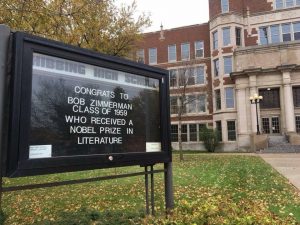Well, today is opening day for Cabaret De Lune, the three-person show that my friends Lucille and Heather and I have been putting together since mid-summer. It’s just after 8 a.m., almost nine hours until we begin the first of our two shows today, and the butterflies are already busy in my gut.
If my performing past is any guide, they’ll stay that way until right about 5 p.m., when a little bit of recorded music stops and I noodle a few notes at the piano and then get up and begin the opening monologue. Once the show gets underway, I should be fine, finding the groove and just doing smoothly and naturally what the three of us have been doing every Saturday for the past couple of months.
There are really only two portions of the show that worry me. The first is a very brief selection of classical music that’s been added in the past week. How brief? Six to eight bars, and it’s a piece I’ve heard thousands of times. And it’s not all that difficult, but it is new, and it requires the precision of a classical pianist, which I am not.
(I took piano lessons for six years when I was in elementary school, then quit playing for four years to concentrate on horn and – for two of those school years – go out for wrestling. When I was a junior in high school, I heard “Let It Be” and decided to resume playing. In college as I’ve noted in another post here, I took five quarters of theory and began to focus my playing on chord charts instead of actually reading the notation. I acknowledged to my sister over lunch the other day that I am far from comfortable sight-reading musical notation, something she does very well, having taken piano lessons from the time she was seven or eight well into college. “Isn’t it interesting that we came up with such different skill sets,” she said. It is, I said, adding, “Just tell me ‘Blues in G,’ and I’m home free.” She shook her head. “No,” she said.)
The other portion of the show that worries me a little is a sixteen-bar section of our closer, a well-known tune that in its middle modulates from A minor, which no flats or sharps, to B-flat minor, which has five flats. That’s a lot of black keys to keep track of. Thankfully, after those sixteen bars, the tune modulates up another half-step to B minor, where I am much more at home.
Beyond those two spots, I’m feeling pretty good about the show, but then . . .
“How are you feeling about this?” Heather asked me one afternoon in late summer when the show was coming together in bits and pieces.
“Oh, boy,” I said. “I’m enjoying putting the bits together and then stitching them into a show, but the thought of actually performing is real scary. I just want to sit in a corner.”
“That’s the Virgo in you,” she said.
“I know,” I said, having done a little digging into my horoscope a few years ago (and finding that a lot of it fits whether I believe in it or not). “And I have the moon and about three or four other things in Leo.” Leos love being the center of attention as much as Virgos avoid it.
Her eyes widened. “Oh, my god,” she said. “You love performing. I can tell. But I bet it’s terrifying.”
I nodded. And she added, “But I also bet that once we get going, you’ll be fine.”
I think that’s true, and we’ll find out later this afternoon.
Given all that, only one song fits in this space today. Here’s “Stage Fright,” the title track to The Band’s 1970 album, and it’s today’s Saturday Single.
